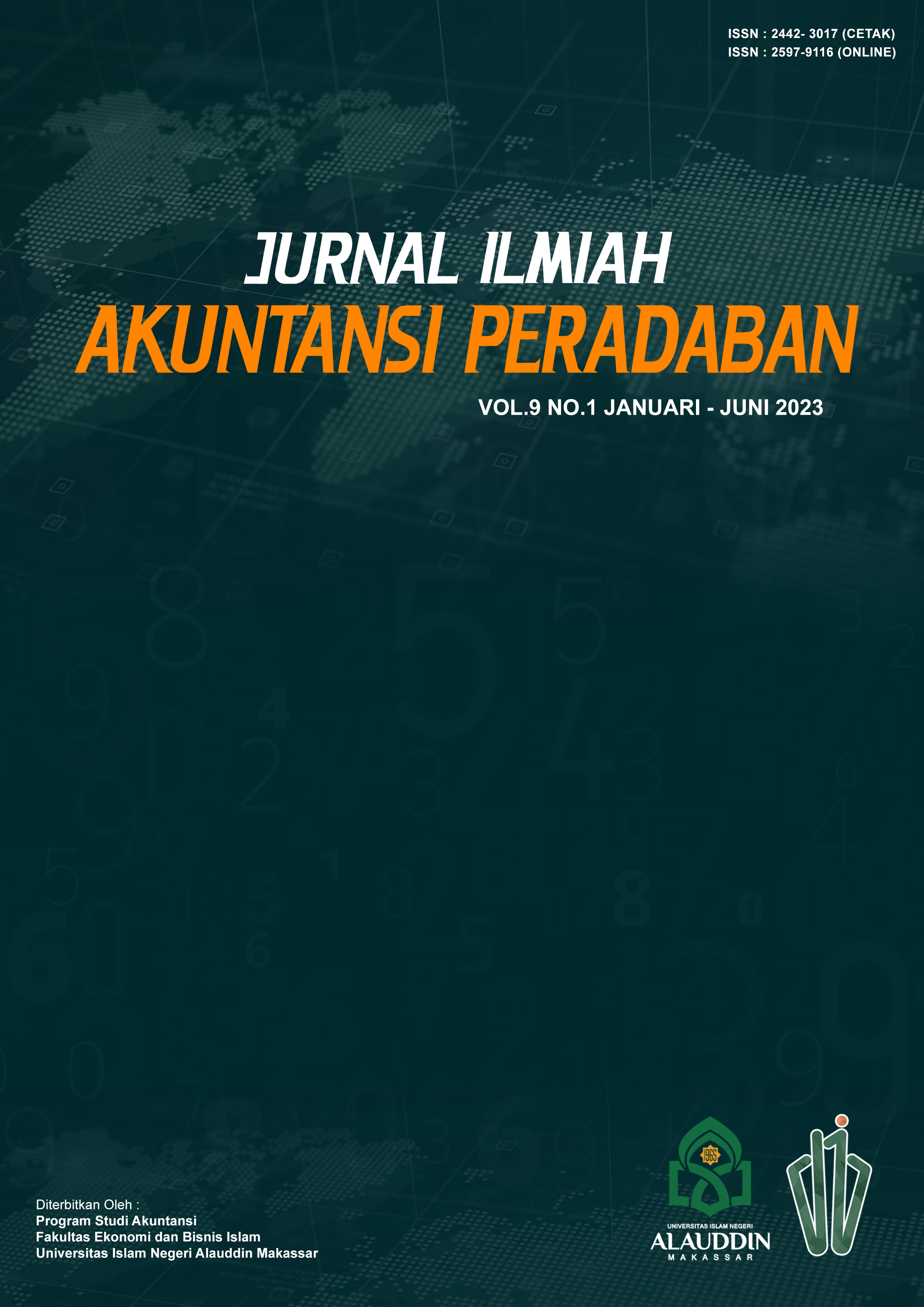Misapproriation Od Asset On Public Sector; Diamond Fraud Theory
Abstract
Asset misappropriation is not only found in the private sector, but it can occur in the public sector. This study aims to analyze how much influence the concept of fraud diamond theory has on government employees as individuals who have the authority to carry out their main duties and functions to improve institutional performance, but on the other hand have an interest in always ensuring their welfare.
The data analysis method uses multiple linear regression techniques. The results of the study show that pressure and capability have a positive and significant effect on asset misappropriation in the public sector, while opportunity and rationalization have no effect.
Focusing on efforts to prevent misappropriation of assets is important for the government to pay attention to by ensuring employee welfare is met according to their rights.
Copyright (c) 2023 Erni Cahyani Ibrahim

This work is licensed under a Creative Commons Attribution 4.0 International License.
Authors who publish with this journal agree to the following terms:
- Authors retain copyright and grant the journal right of first publication with the work simultaneously licensed under a Creative Commons Attribution License that allows others to share the work with an acknowledgement of the work's authorship and initial publication in this journal.
- Authors are able to enter into separate, additional contractual arrangements for the non-exclusive distribution of the journal's published version of the work (e.g., post it to an institutional repository or publish it in a book), with an acknowledgement of its initial publication in this journal.
- Authors are permitted and encouraged to post their work online (e.g., in institutional repositories or on their website) prior to and during the submission process, as it can lead to productive exchanges, as well as earlier and greater citation of published work (See The Effect of Open Access).
Under the following terms of Creative Commons:
-
Attribution — You must give appropriate credit, provide a link to the license, and indicate if changes were made. You may do so in any reasonable manner, but not in any way that suggests the licensor endorses you or your use.
-
NonCommercial — You may not use the material for commercial purposes.
- No additional restrictions — You may not apply legal terms or technological measures that legally restrict others from doing anything the license permits.


